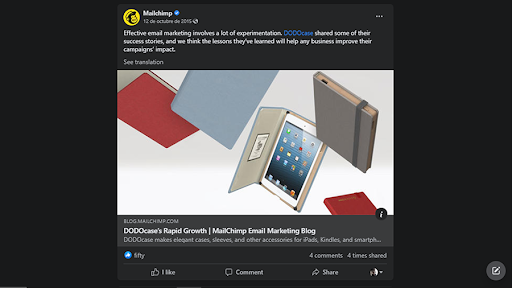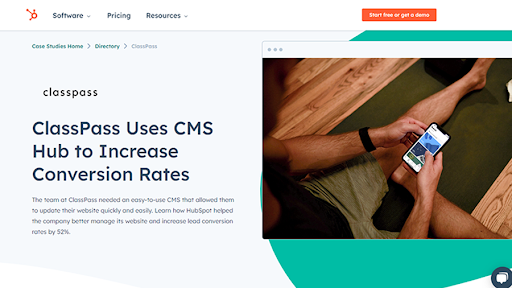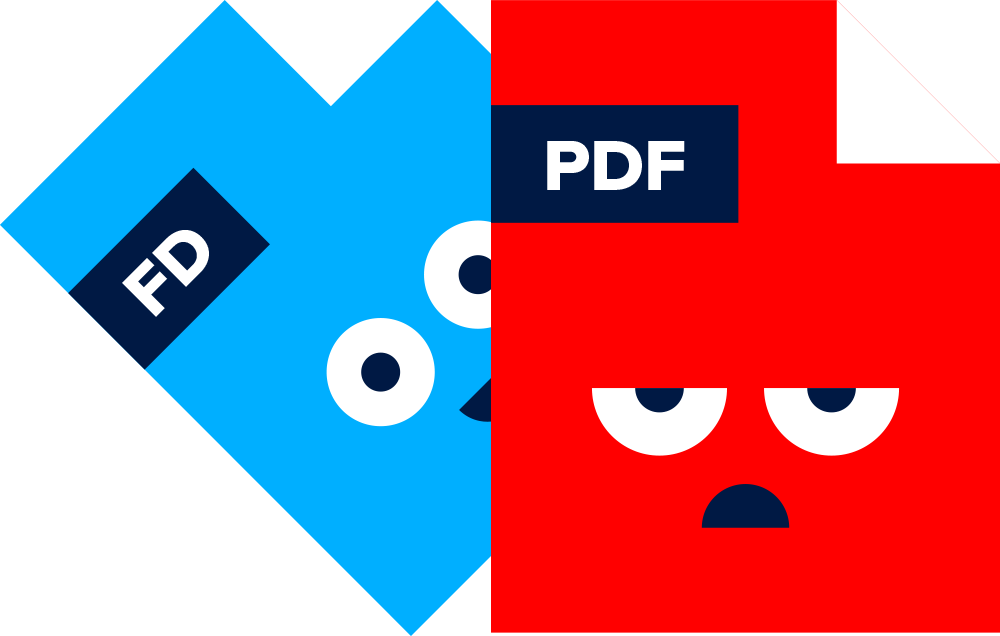While inbound marketing has been around long enough for us to have a good sense of what works and what doesn’t, there’s no denying that the practice looks very different depending on whether you are trying to promote directly to individual customers or other businesses — a critical distinction you need to understand to get results in the competitive B2B marketplace.
Suppose you are trying to appeal to company decision-makers by following guidelines set for a B2C strategy. In that case, you will most likely be disappointed with the response unless you adapt your content to suit that framework.
To help with that, we will closely examine what effective inbound marketing looks like in a Business-to-business environment. Pay particular attention to how some of the best content marketing agencies do things and the lessons and insights you can mirror when working on your own content.
How B2B inbound strategies differ from the traditional B2C approach
The basis of inbound marketing as a whole lies in understanding your customers. To attract your target audience and provide meaningful experiences, you must first know what they want and expect.
However, when the target you’re aiming for is another company, there are some key differences you need to keep in mind from the get-go.
Buyer personas
First, B2B and B2C companies have significantly different types of buyer personas to pursue.
A buyer persona is a profile you create mirroring your ideal customers, using the information you've gathered about them. It's a fictional characterization to better understand your target audience, their preferences, and their behaviors.
B2C buyer persona primarily relies on emotions to make a purchase. A product’s first impression is crucial, which is why B2C brands focus so much on brand awareness and positioning.
Meanwhile, for a B2B company, the ideal buyer persona bases their purchases mostly on logic and reason; and requires thorough research. This is why inbound marketing strategies are more effective for B2B companies than outbound, interruptive marketing strategies. You just need to ensure that your content appears whenever your customers search.
Buyers' journeys
A buyer’s journey consists of all the steps your customer goes through to purchase your product or service.
As we mentioned before, B2C buyers make emotional decisions. Their buyer's Journey is much faster, involving less consideration and deliberation. Additionally, only one person has the final say in the purchase.
For a business, decisions often depend on teams. They must evaluate all their options, compare their prices, and gain their supervisor's approval. That's why you'll need more content and constant communication to convince them eventually.
What you’re selling
Your objectives will also differ when selling to other businesses instead of individual customers.
If your customers are regular individuals, you aim to sell a product. The inbound strategy will be focused on helping the customer identify a need and then demonstrating how your product or service can fulfill it.
In B2B, this is more complex.
Of course, you want to sell, but the ultimate goal is to connect with other businesses and build long-lasting relationships. By doing so, you can become a supplier who sells many products or provides services over time.
B2B customers make larger purchases. So, decision-makers must become genuinely familiar with the company they are considering doing business with and what it's offering. But once they do, you can expect to have them as clients for many years.
That’s why, although your buyer’s journey can be longer, at the end of the day, the revenues are worth it if you do it right!
The three keys to successful B2B inbound marketing strategies
We've clarified why your B2B company needs to take a different approach to your inbound strategy. Now let’s talk about some aspects inherent to most successful B2B inbound strategies.
The importance of careful targeting
As mentioned, gaining a new customer can be a long process in B2B, so figuring out the right audience for your inbound strategy is essential. You’ll want to attract companies needing your product and willing to choose you as a provider, but you’ll also have to target the decision-makers inside those companies.
The content you develop needs to be appropriately targeted, not only in terms of the topics you choose but also in the language you use and the personality you imbue into your pieces.
Remember that, in terms of branding, companies also have personalities. If you strive to create a strong relationship with other companies, aim for those whose brand values resonate with yours.
Competence and simplicity:
The primary goal of your inbound strategy is to educate your potential clients and assist them in finding viable solutions for their business needs.
Informative content will demonstrate your company’s expertise, establishing your brand as competent and dependable. And by keeping things as straightforward as possible, you also increase the likelihood that your potential customer will choose you.
After all, whoever encounters your content is assessing different options and companies: if you make your pieces easy to understand, they’ll appreciate it.
Reputation and brand trust:
A brand’s image is directly linked to its collaborators: drawing an example from the B2C framework, if you buy something and it never reaches its destination, you will be angry with the store that sold it, not its distributors.
That's why, in the B2B environment, companies only look for reliable businesses that have proven themselves in their industry. The quality of your content is vital to building trust in your brand. Mistakes, misleading information, or even social and political statements will affect how others perceive your brand.
Everything you publish represents your brand. Ensure all the information you provide in your inbound strategy is accurate and verified. And check if your words adequately convey what your business stands for.
Three types of inbound content you’ll want to focus on:
As you can see, the B2B environment has several traits that make developing content for it unique. In this context, the type of content you provide will also make a difference.
While there’s a myriad of ways in which you can approach B2B content marketing, here are some tried—and—true formats that have proven to work reliably well when you’re targeting other businesses:
Video marketing content
High-quality videos make complex concepts easier to understand and deliver higher engagement because they demand less effort from the viewers than an eBook or an in-depth blog article.
It’s the main reason why video has become a staple in most successful content marketing strategies; there’s simply no better way to convey large amounts of information in an entertaining and easy-to-understand way very efficiently.
The long and short of it is that using the right video at the right time can allow you to side-step some of the pitfalls of providing complex information to a company decision-maker while still making it entertaining and appealing. Not to mention that whatever style you choose for your content can help you convey your message and contribute to showcasing your brand’s uniqueness in the industry.
Success stories showcase
These refer to content that follows a customer’s experience with your product. They showcase their challenge, how your product helped overcome it, and the success they’ve achieved thanks to it.
Success Stories are great for B2B inbound marketing because they lend credibility to your brand, leveraging what every company decision-maker cares most about results.
Moreover, the message comes from other clients, so it’s easier to resonate with your target audience.

For example, in this Social Media post from Mailchimp, the company addresses the lessons their customer learned by campaigning with them. Notice how the focus is on providing readers with helpful insight, making the piece look less promotional and more educational.
In-depth case studies
In a case study, you can read in-depth reports about the real-life performance of a company in terms of whatever you did to help them achieve them.
Case Studies appeal to logic to paint a picture of how success looks for your clients. Ultimately, the message is often reinforced with objective data and identifiable metrics that show revenue growth or any metric that proves how your product helped the customer.
In this example, you can see the focus is on actual client data. The title states clearly that there was an objective result: an increase in conversion rates.

Outreach and distribution channels for your B2B-focused inbound content
As mentioned, targeting the right audiences is critical for your inbound strategy. And to archive that, you need to know where to distribute your content.
Before you go, we want to mention a few popular channels to keep in mind if you want other businesses to see the excellent B2B marketing content you work on.
- Blogs are a great medium to convey your product and how it can work for a business. In a blog article, you can tackle concepts requiring a lengthy explanation and provide helpful resources, data, or results that interest your audiences. Your clients will probably look for this information on search engines like Google. And with a good SEO strategy, you’ll be easy to find!
- Once your clients subscribe to your newsletter, email is a great channel to send periodical updates on your products. The purchase journey for B2B companies requires constant communication and updates. Email is an optimal means to keep in touch and ensure that your clients stay up-to-date with your news.
- Don't be afraid of distributing your video content on social channels — professionals use Instagram too! Being on them will allow you to reach audiences subtly. If perhaps they don’t match your company’s personality, it’s okay. LinkedIn is an excellent platform for business. Many professionals use this social media daily, and with quality content and relevant information, you can quickly build favorability towards your brand.
Discover: How to Make a Case for Building an Inbound Marketing Program
Conclusion
Businesses are constantly looking for information and data to grow. For a B2B company, developing a successful inbound strategy can be essential.
That doesn’t mean you can just imitate B2C’s inbound practices. Nobody understands this distinction better than a business-oriented company. After learning what makes B2B inbound marketing unique, you can develop successful strategies that reflect your company's growth.



